It would be amazing if every person bought or booked after their first point of contact with your company. It rarely happens that way. But with a solid lead nurturing strategy, you can greatly increase the chances that a lead turns into sale.
After over 20 years split between sales and marketing, I’m acutely aware of the anxiety that fills the space between a lead showing interest and when they finally place an order. So let me break down what a successful lead nurturing campaign looks like and give you a few examples of them in action. Put some of these strategies in place and watch your conversion rate jump.
Table of contents
What is lead nurturing?
Lead nurturing refers to the steps you take to build a relationship with people who’ve shown interest in your product or service but aren’t ready to buy yet. Using lead nurturing strategies, you guide people through your marketing funnel from initial interest to conversion.

Lead nurturing guides people through your sales funnel.
A lead nurturing campaign can take on many forms and use multiple channels to reach a prospective customer. Email is the most often used, but social media, snail mail, and even the occasional phone call are useful. Anything that strengthens your relationship while the prospect considers their options will up your chance of making the sale.
As a practical example, let’s say someone has a consultation with your team but doesn’t book a service during the call. Over the next couple of weeks, you send a few follow-up emails, mail out a coupon-code postcard, and attempt to schedule the work through SMS texts. All of those actions are part of your lead nurturing strategy.
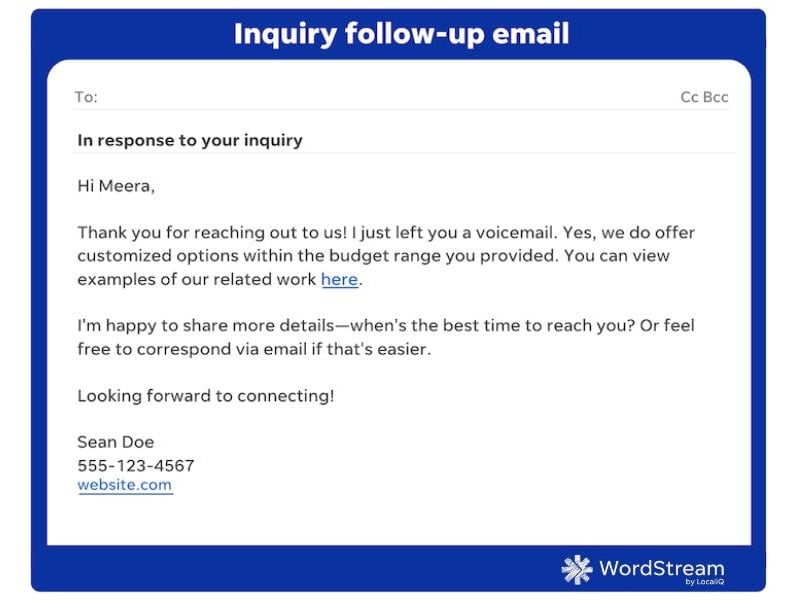
An example follow-up email as part of a lead nurturing campaign.
Benefits of lead nurturing
Here are a few ways that a lead nurturing strategy leads to a higher sales close rate.
Builds a relationship with your business
Over 90% of people polled by PWC said they’d buy from a company that gained their trust. And nearly that many said they’d recommend that company to others.
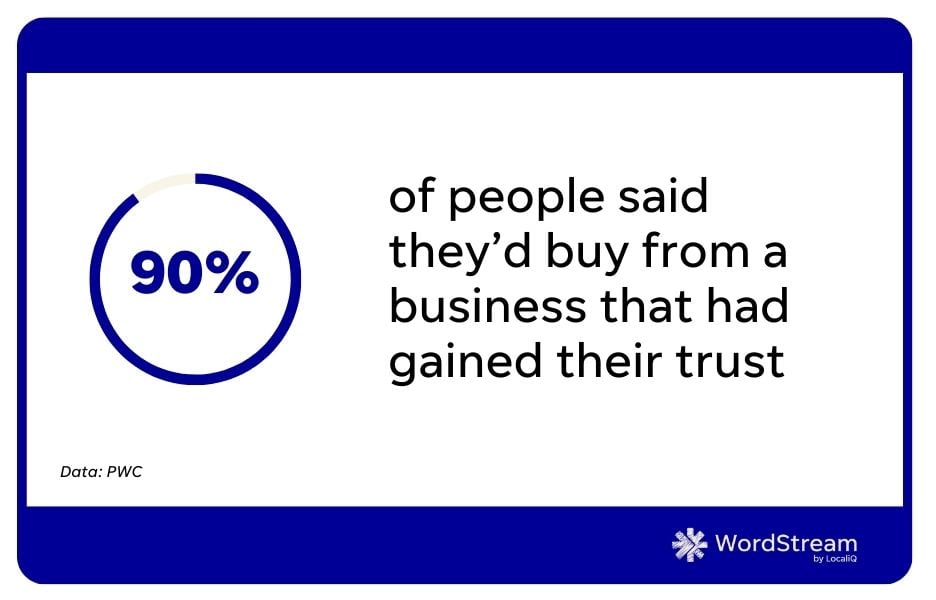
Your lead nurturing campaign is an opportunity to send helpful tips, social proof, and other content that gives a lead more confidence in your company.
Increases brand awareness and recall
How many times do you see an advertisement or logo before you remember it? The common answer is that you need seven touchpoints with a potential customer before they remember your brand, logo, or products (it’s unoriginally called the rule of seven).
A developed lead nurture strategy lets you have those meaningful interactions with someone after they’ve requested information or saved a product to their cart. When it comes time to buy, yours is the brand at the top of their mind.
Educates your best customers
Buyers are taking advantage of the vast amount of information available at their fingertips. A Google study revealed that 53% of shoppers always research before buying. At the same time, transparency is becoming as important as price and quality for many buyers.
The business that offers the most information will win. And that’s exactly what happens during the lead nurturing process. You give more information about where your products are sourced or the steps you take to leave a service area spotless. The more informed your lead feels, the more likely they’ll choose your solution.
Leads to an increased conversion rate
All of these benefits lead to the ultimate goal of enticing more people who’ve become leads to buy from your business. Since nurtured leads make 47% more purchases than leads that weren’t nurtured, it has a good track record of hitting that goal.
7 strategies for successful lead nurturing campaigns
Lead nurturing isn’t one size fits all; a clothing retailer will use different tactics than an enterprise software consultant. So consider this a menu of super effective lead nurture ideas you can mix and match to build your own strategy.
1. Send targeted emails
I love email as a lead nurture channel. It’s easy to automate, less expensive than ads, and endlessly flexible. Plus, it’s useful for just about any type of company or product.
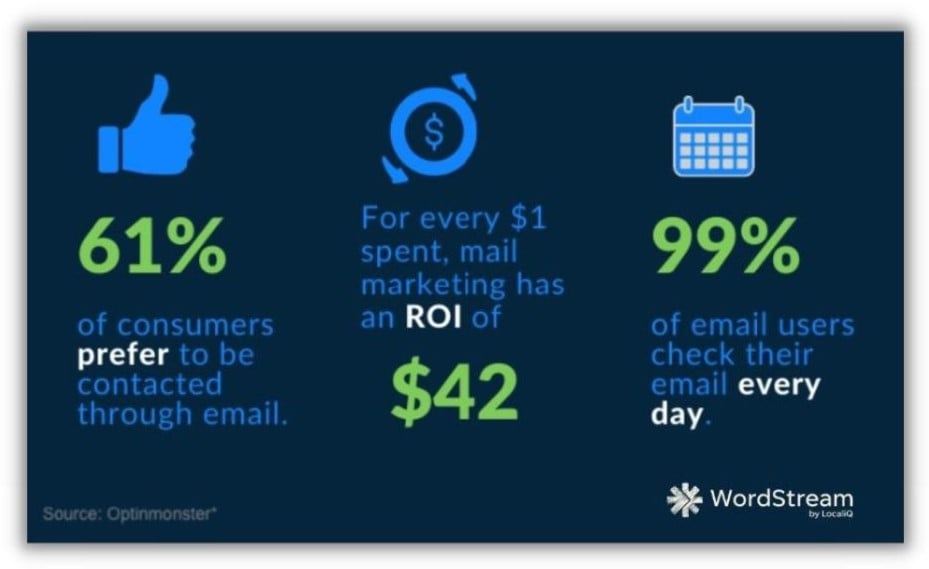
Of course, you can’t just send a bunch of random emails to a lead. That’ll get annoying. Here are some ways to get the most out of your nurture emails:
- Segment your list: Segment your leads by behavior (clicked on a product page, watched a video), engagement (those that opened the last email vs. those that didn’t), or journey stage (new lead vs. returning customer).
- Personalize for relevance: Send personalized emails with offers and information relevant to each customer based on what you know about them (their birthday, their interests, their shopping habits).
- Write captivating headlines: Keep open rates high by writing concise, actionable subject lines.
- Include a strong CTA: Add a call to action that clearly states what your lead should do next (buy now, watch a video, claim your discount).
- Make sure they’re mobile friendly: 70% of emails are opened on a mobile device, so make sure yours are fast-loading and easy to read on mobile.
- A/B test: A/B test variations of your CTA, subject line, and offers to see which gets the most clicks and conversions.
2. Retarget with ads
Retargeting ads help you nurture leads by presenting your offers to them multiple times as they click around the web. If you’ve ever clicked on a product page and then seen an ad for that product on other websites, you’ve probably experienced retargeting ads.
These ads work by tagging someone who visits your website or enters your marketing funnel in some other way. The lead is then presented with ads automatically on websites within an advertising network (like the Google Display Network, for example).
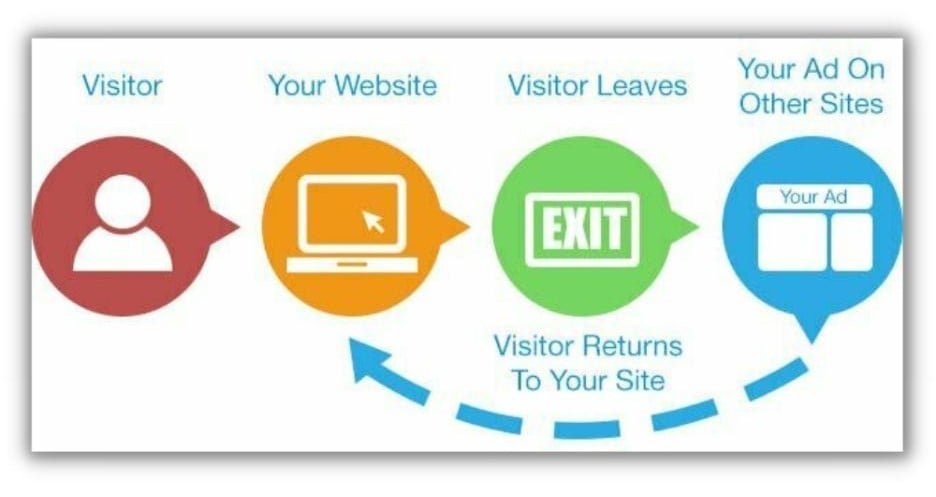
Make sure to follow lead nurturing best practices when setting up your remarketing campaigns so your ads don’t go from effective to overbearing.
3. Leverage SMS marketing
In the right situation, SMS marketing—using texts to reach your audience—is the ideal lead-nurturing strategy. That’s because SMS requires an opt-in, so the people you text have qualified themselves as interested leads.
Here’s why SMS marketing works:
- It costs less than other forms of advertising
- A text doesn’t fight for attention like an email in a crowded inbox has to
- 89% of customers say they prefer texts to calls with businesses
- Text open rates are as high as 98%
Just like emails, you can use texts to offer time-sensitive discounts, confirm appointments, or announce new products or services.
4. Create nurture content
Content marketing solves the need to educate your leads while they consider their options. It includes several formats such as blog posts, FAQs, ebooks, or webinars.

Following up with helpful content is a solid nurture strategy.
Content is a multi-channel marketing tactic that fuels the other nurture channels. You can send a piece of educational content through email, SMS, or distribute it on social media.
Ideally, you’ll create content for each stage of your marketing funnel:
- Awareness stage: Focus on exposing and solving a problem through how-to content.
- Consideration state: Show how your product or service solves the problem with use cases.
- Action stage: Explain specific product features coupled with discounts.
5. Connect on social media
I think some marketers forget about social media as a viable lead nurture channel because it feels less one-to-one than email or texts. That’s a shame because it’s a natural fit for building trust if you’re already posting helpful content.
An important step for lead nurturing on social media is to make sure you invite leads to follow your accounts. Then they’ll see your brand, products, and amazing content in their feeds.

Social media is the perfect place to nurture leads with helpful content.
Once leads start following you, it’s important to increase their engagement by asking questions, posting polls, or going live on Instagram or Facebook. That helps you in three ways:
- You connect directly with a lead, especially in comments and replies.
- You learn more about your leads through polls, questions, and their engagement.
- You get more people viewing your posts because social media platforms reward engagement.
And don’t forget, you can always ask a lead to contact you via direct message if they pose a question or response on one of your social media posts.
6. Pick up the phone
I got a voicemail a while back from a yoga studio I visited once. I’d done a free trial class and the instructor that led it called to see if I was interested in coming back. She’d asked me some questions in the class, so her voicemail had specific recommendations for which sessions best fit my needs.
Using the phone like this to nurture leads can be tricky business. Many people, especially younger generations, don’t like phone calls. Make sure you have permission to call and make sure you add value.
The call I received was valuable because it was personalized for me. And yes, I went back for more sessions because of it.
7. Score leads
Lead scoring is the process of assigning a value to a lead based on a set of predetermined characteristics. Leads become more or less valuable based on things like the value of the product they’re interested in and the likelihood of them making a purchase.
A lead score then determines what nurture strategies you’ll apply. Leads with higher scores might get higher touch follow ups. Lower scores can be handled with automated lead nurturing tactics.
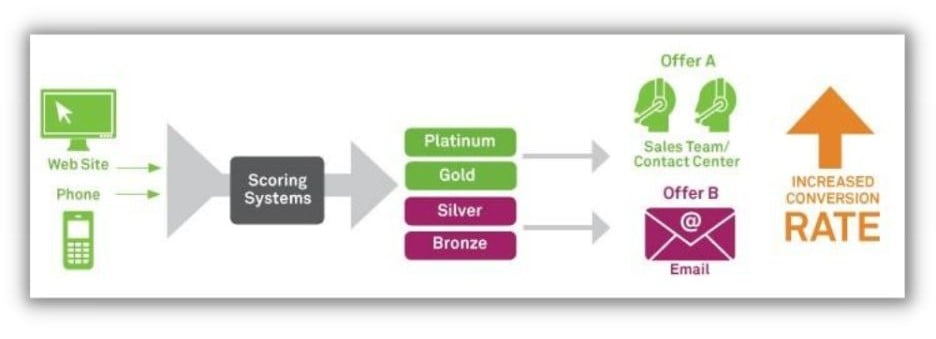
Example time. Person A gave their email address in exchange for a guide to home lawn maintenance. Person B called and spoke to a rep about hiring crews to maintain three golf courses. Both the product value and the action give lead B a higher score and suggest the need for more direct follow up.
There are other characteristics to consider. The person’s decision-making ability (e.g. head of purchasing) or the source of the lead (referral vs. cold website visit) might also affect the lead score.
Lead scoring helps you direct the highest effort towards the best potential return.
5 lead nurturing examples
Theory is great, but let’s dig into some lead nurturing examples from companies that do it well.
1. Abandoned cart recovery
Abandoned carts are a scourge for most online retailers. Missing the sale after coming so close is like getting stopped at mile 25 of a marathon.
Menswear band True Classic doesn’t take missed opportunities lightly. They immediately send a valuable offer to people who look at a product or place it in their cart.
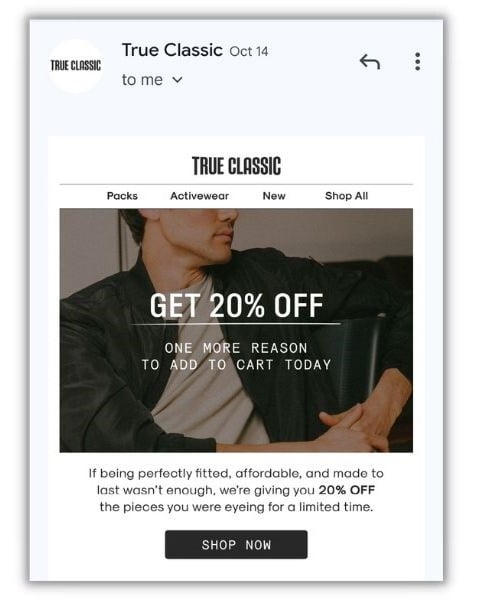
Notice the urgency they’ve added by making the offer for “a limited time.” The offer and urgency will convert lots of leads to customers.
2. Milestone celebrations
Of course, not every lead is so close to making a purchase. For lower-intent leads, it makes sense to just keep a friendly dialogue open.
This chiropractor does a nice job of it by sending a happy birthday SMS text with a link to a fun birthday message.
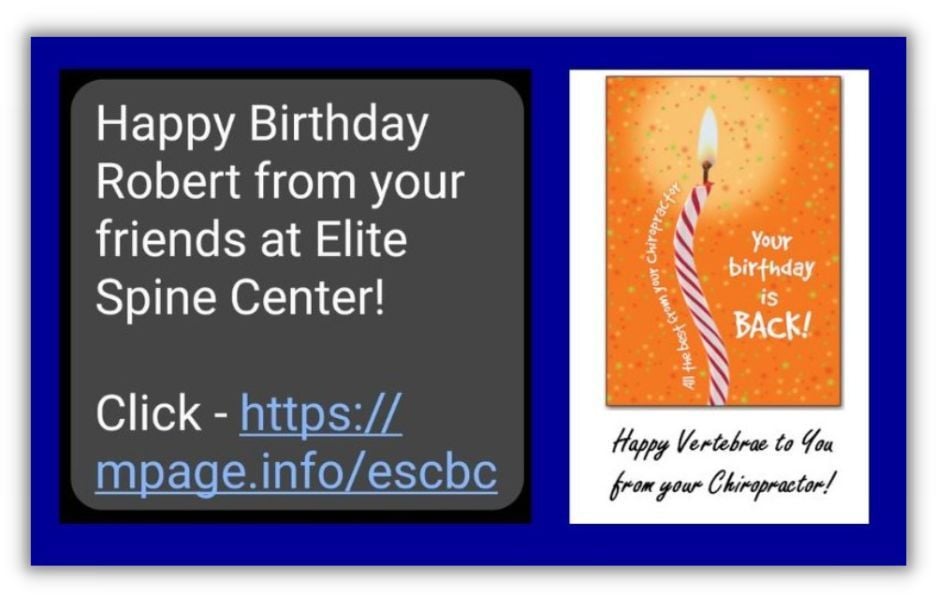
You don’t need to gather personal information to use this lead nurturing strategy. You could send a thank-you note on the anniversary of your first connection. Or if you work in a particular industry, like education, you could send a “happy Teacher’s Day” email.
3. Dynamic remarketing
Google’s Dynamic Remarketing Ads make lead nurturing more personalized by automatically pulling the products you look at and filling them in the ads.
Here’s an example from a retail shoe store.

And perhaps no one is better at it than companies in the travel industry.

The idea is to make it super easy for the lead you’re nurturing to see the ad and complete their purchase.
4. Maintenance reminder
There are so many things in life that need regular maintenance. Our cars, our HVACs, and our bodies all need the occasional review and tune-up. If you’re in the business of providing those services, an automated lead nurturing campaign is perfect for booking more business.
This home services company sends timely texts each year to catch leads as they’re facing seasonal maintenance jobs.
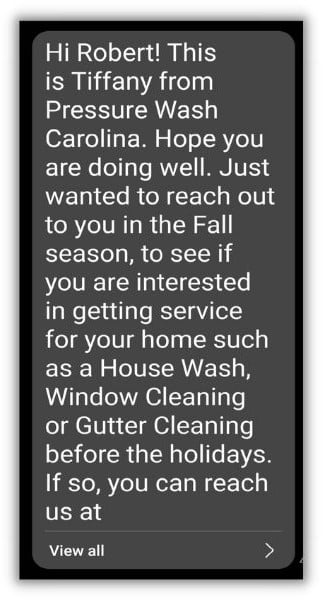
This lead nurturing tactic works well for consumable products, too. If a tube of toothpaste or bag of dog food is expected to last 30 days, then a reminder to purchase every 30 days should give conversions a boost.
5. Social listening
Social listening is such a cool and underrated lead nurture strategy. The gist is that you set up alerts when someone mentions your brand or a keyword on social media platforms. You then join the conversation in an organic way.
I consider this a lead nurturing tactic when someone directly asks about a product you produce, which is exactly what happened here.

The original poster tagged the company, Viking Wood Splitter, which makes wood cutting swords (of course). People showed interest in the swords throughout the comment section. The brand was right there, nurturing their new leads with answers and advice.
Start lead nurturing to convert more sales
Most people won’t buy right away. Lead nurturing helps you convert more of your hard-won leads into customers by building a relationship through trust, transparency, and education.
Here are seven of the most effective lead nurturing strategies:
- Send targeted emails
- Retarget with ads
- Leverage SMS marketing
- Create nurture content
- Connect on social media
- Pick up the phone
- Score leads



